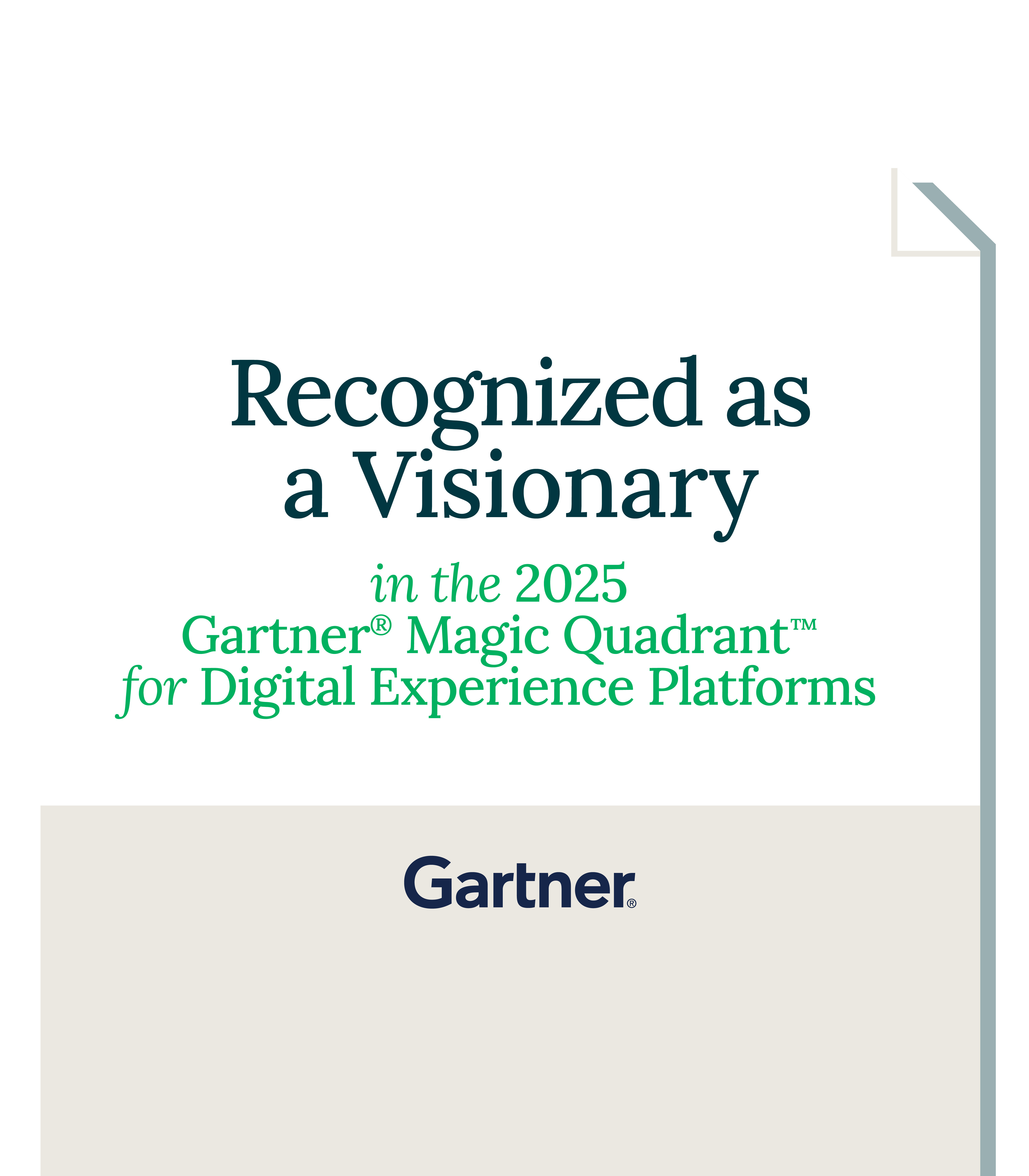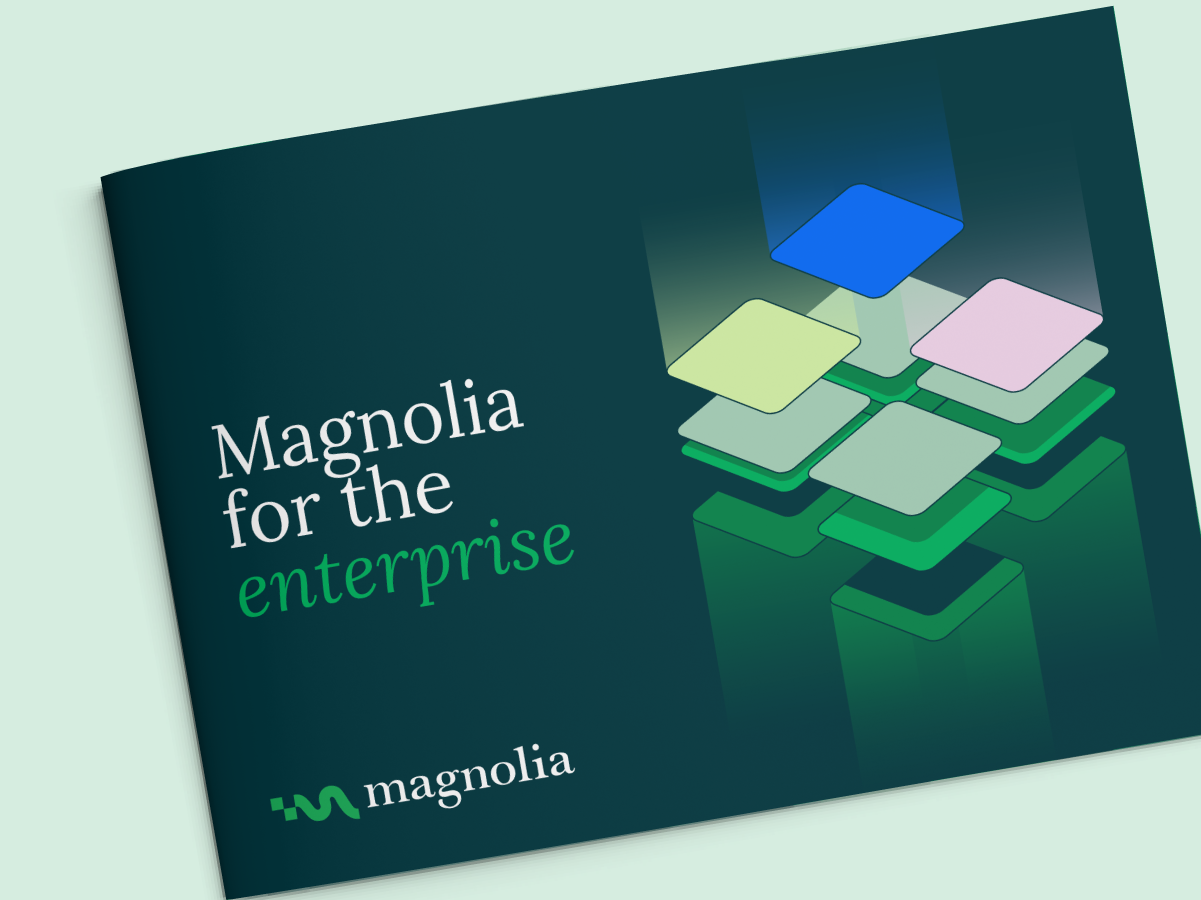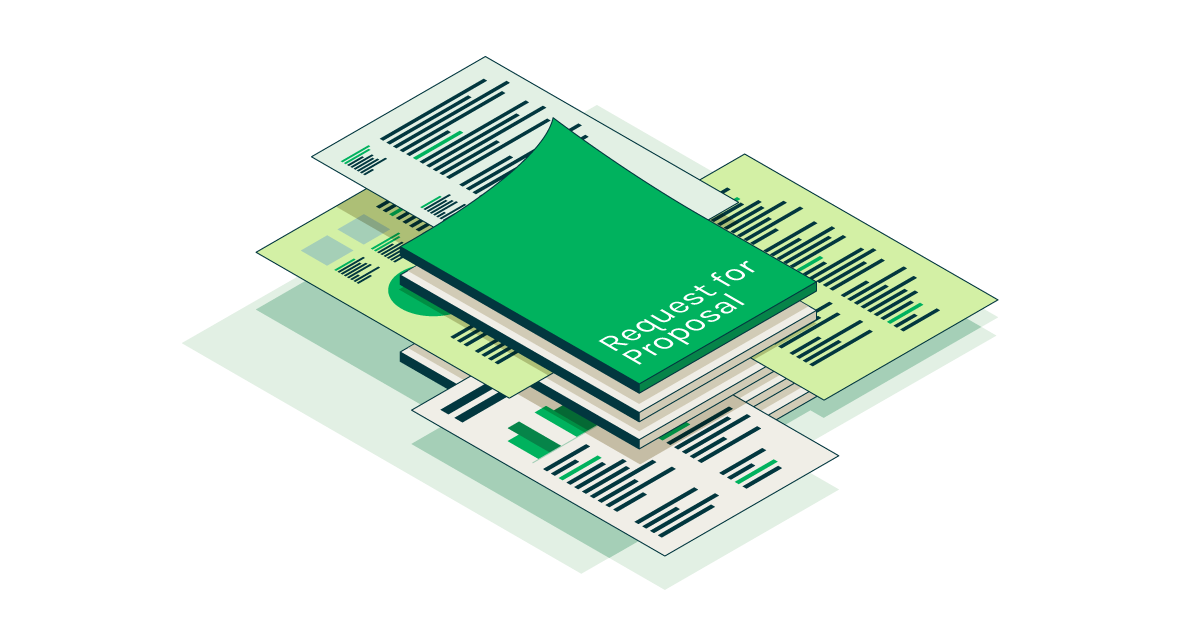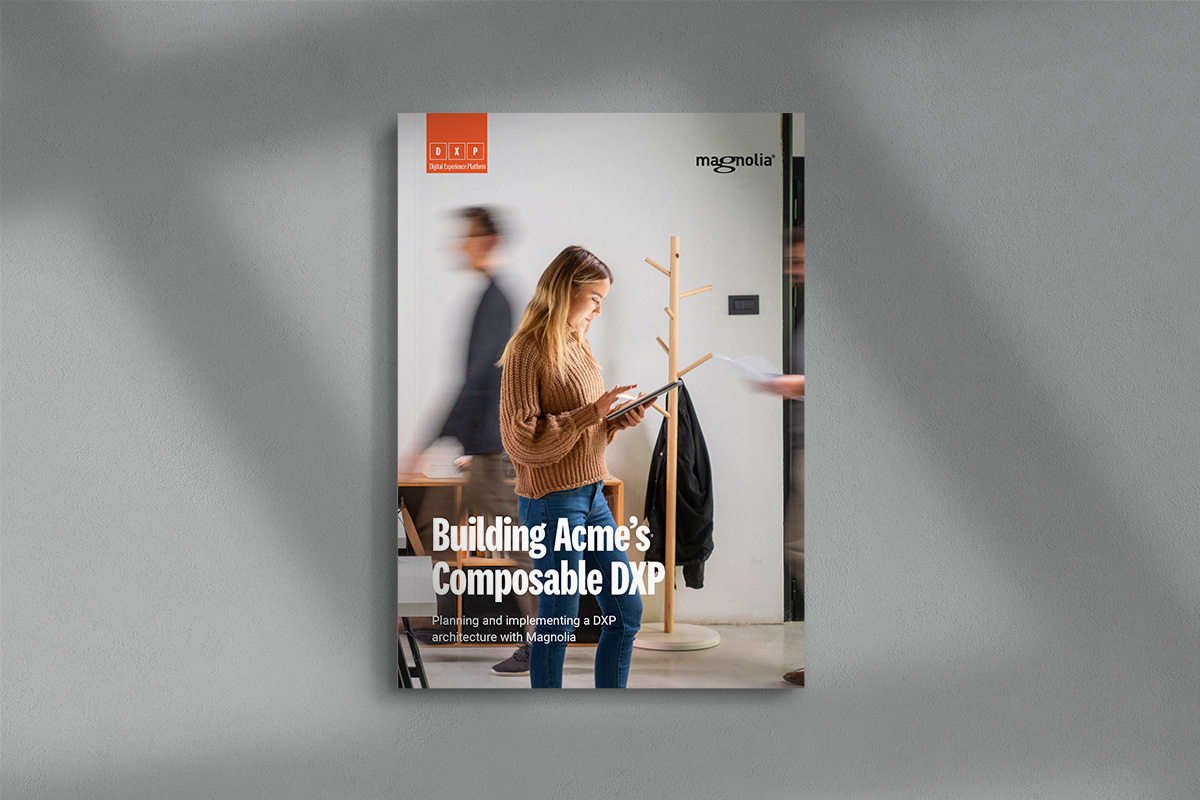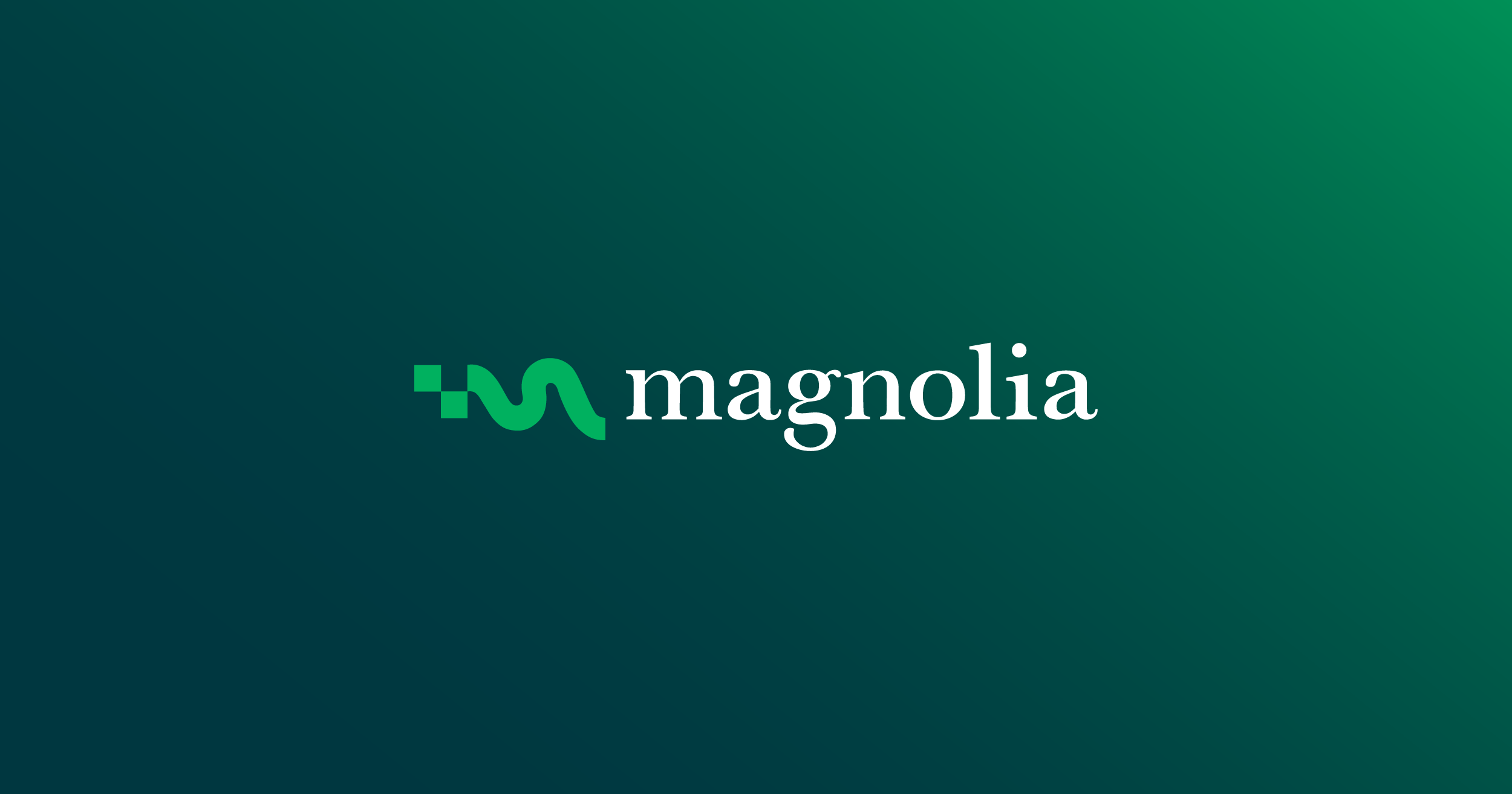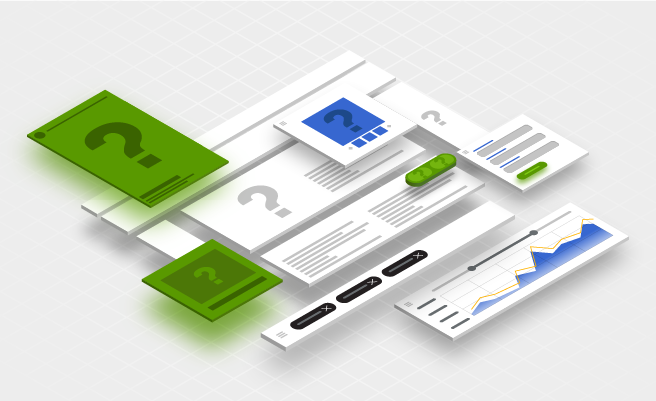What is a DXP?
A Digital Experience Platform (DXP) is a set of integrated technology components that together provide the tools and capabilities to create, manage, and deliver content and experiences across digital channels and touchpoints in a consistent, unified way that allows developers and non-technical users, for example, marketing teams, to collaborate.
A composable DXP is built using a modular architecture, enabling organizations to adapt their digital strategy and execution to changing user behavior and customer needs.

How to build a composable DXP
A DXP requires the right building blocks and a DXP integration framework that streamlines digital experience management by orchestrating how the various DXP technologies interact with each other to deliver optimized and personalized experiences to end users across touchpoints in the entire customer journey.
To reduce complexity, we developed a DXP framework that structures the DXP in three layers with four building blocks, making it easier to comprehend and design. The concept of building blocks lets you start with the core technologies while keeping future growth in mind, allowing you to expand your DXP system capabilities over time.
You will probably find that you already have many DXP components in your technology landscape. Our framework and DXP resources will help you build out a fully-fledged DXP, identify potential gaps early, and find a DXP partner.


Experience layer
Search & Discovery
Findability of information including SEO
Omnichannel Orchestration & Delivery
Experience delivery to various digital channels and devices, such as websites and mobile apps, and delivery automation
Internationalization & Personalization
Data-driven, personalized content, contextualization, segmentation, and localization of touchpoints
Access & Profile Management
Customer profile management and authentication

Management layer
Campaign Management
Marketing automation and communications on channels, such as web, email, and mobile
Content Management
Experience management, central repository, headless CMS, and multi-site management
Collaboration & Workflow Management
Cross-departmental communication and collaboration, operational and approval workflows
Analytics & Optimization
Analytics and business intelligence, A/B/n Testing, and journey mapping

Infrastructure layer
Deployment
Cloud infrastructure and self-hosted deployment
Developer Tooling
Low-code and agile development, APIs, CI/CD, and automation
Integrations & Extensions
Interoperability with adjacent DXP technologies such as data sources and DX management, and addition of functionality
Security & Privacy
Access control, SSO, compliance with security and privacy standards including ISO 27001 and the GDPR
Benefits of Magnolia

DXP 101: From disjointed to seamless customer experiences
There is a shift away from content management to digital experience management. Market leaders and disruptors now go beyond creating and managing digital content and focus more on holistic, integrated customer journeys.
Led by analyst firms Gartner and Forrester, the category of Content Management Systems (CMSs) evolved into Digital Experience Platforms (DXPs). Our beginner’s guide will help you make sense of the DXP and equip you with the knowledge you need to choose the right solution for your business.
One platform with powerful DXP integrations

Unlike DXPs based on monolithic architecture, Magnolia’s DXP and its composable architecture help organizations create fully integrated customer experiences and speed up digital delivery by:
- Consolidating all content in one content hub, including third-party Content Management Systems (CMSs)
- Connecting any data source, application, or channel through easy, pre-built integrations
- Offering unified authoring in one seamless workflow
Magnolia offers Connector Packs for Marketing Automation, Commerce, Analytics, Optimization, and Digital Asset Management.
Other popular integrations include Salesforce Commerce Cloud, Segment’s Customer Data Platform, and artificial intelligence
Magnolia for the Enterprise
FAQs
What is a CMS?
Content Management Systems help create and manage text and images for traditional websites. They include a content repository to store content and an authoring interface for content editors to manage website pages.
What is WCM/WEM?
Web Content Management/Web Experience Management relates to the second generation of CMSs. It delivers content to one or more channels and typically includes personalization and analytics on top of its content management capabilities.
What is a DXP?
Digital Experience Platforms provide fully-integrated tools that allow organizations to create, manage, and deliver digital content across multiple online and offline channels and throughout the customer journey. A digital experience platform (DXP) provides software solutions that allow organizations to create, manage, and deliver consistent experiences, improve user experience, and retain customer loyalty.
Digital experiences are interactions between a customer and a business or its services using digital technology to deliver relevant content on digital platforms. Examples of digital experiences include:
- browsing a website
- shopping online
- talking to a smart assistant
- streaming media
In enterprise organizations, several teams usually collaborate to create personalized content. A DXP, therefore, offers different tools for different user types.
- Content creators, like marketers or editors, use a central visual interface to create relevant content.
- Developers get to use IDE integrations, low-code tools, or APIs.
What is the difference between a DXP and a CMS?
Management Systems were introduced to help organizations create, manage, and deploy content for their website. Sounds like ancient history?
Yes, and back then, websites were simple, and so were the tools to manage them. Why? These early websites consisted of text, links, and sometimes images.
While CMSs still exist – typically as a component of a DXP – the term no longer does justice to the single platform that provides integrations to a whole ecosystem of DX technology to create engaging and personalized omnichannel experiences that go far beyond what a website in the 1990s had to offer, you can see here, what a DXP is.
What is headless architecture?
Headless architecture decouples the backend from the frontend. The frontend is the presentation layer that users directly interact with. It is the ‘head’ in ‘headless’. While traditional Content Management Systems provide their frontend, by definition, a headless CMS does not include the front end. Instead, it acts primarily as a digital content repository making content available via APIs for client-side customer interaction. Any frontend has to be built separately to breed solutions.
This architecture allows developers more flexibility and control over the experience. It also makes integrating content reuse and microservices into the frontend and mobile applications easier. On the other hand, building the frontend requires additional effort.
Companies with large development teams or agency budgets can benefit from this approach without feeling restricted. Others might consider a hybrid-headless CMS coupled with a Digital Asset Management (DAM) instead, allowing them to choose between a headless and a traditional approach on a project-by-project basis.
What is composable architecture?
Composable architecture is a software development pattern that emphasizes modularity and reusability of components. It involves breaking down a system into smaller, independent components that can be easily combined or replaced without affecting the rest of the system. This approach promotes code reuse, scalability, and maintainability. Composable architecture often aligns with functional programming principles and encourages explicit dependencies and data immutability.
What is the difference between a DXP and a composable DXP?
A composable DXP is a specific kind of DXP that uses a modular architecture. That means it comprises individual software components that contribute capabilities to create, manage, and deliver digital experiences for better digital customer experience.
A Content Management System (CMS) and content delivery are some of its core components; they comprise the core technology of a composable DXP. Other components include Customer data, Personalization, Analytics Tools, Search, Commerce, Recommendations, and a user interface.
These individual software components are often called best-of-breed technology because they solve a specific problem very well. Starting with only the required components and adding others over time allows you to control complexity and grow your digital channel.
To get individual components to work together as one, a DXP relies on integrations between them; think of it as a mesh or a network. This network connects the individual software components seamlessly, making them available in the platform rather than accessing each component separately. The opposite of a composable DXP is a suite DXP that aims to provide an all-in-one solution.
Both approaches have pros and cons, the biggest difference being flexibility. While purchasing an all-in-one solution might seem simple, it has limitations. A software suite includes a large set of capabilities that you might or might not need and that might or might not do what you need them to do. However, adding best-of-breed software components to a suite is often difficult or impossible. And using only capabilities within the suite makes it often hard to deliver new, innovative projects for marketing teams and customer portals.
You also have to look into your overall business goals. If you find it difficult to choose between buying a closed suite and building a complex DXP, consider a composable solution that allows you to grow as you go. There are different difficulty levels when building a composable DXP, and you don’t have to start at level 99 and fight a gigantic beast right away – or at all. You can start at level 1, and how complex you want your DXP to become is up to you.
Is a DXP headless?
A DXP can be headless, but depending on its capabilities, it can manage, host, and render traditional websites based on CMS templates rather than as frontend apps built with React or Angular.
Sign-up for a developer trial
Get your free 30-day trial now
You're steps away from getting hands-on with Magnolia:
- Request your 30-day free trial.
- We'll send you a license key and the needed resources.
- Install Magnolia and start building your projects.




